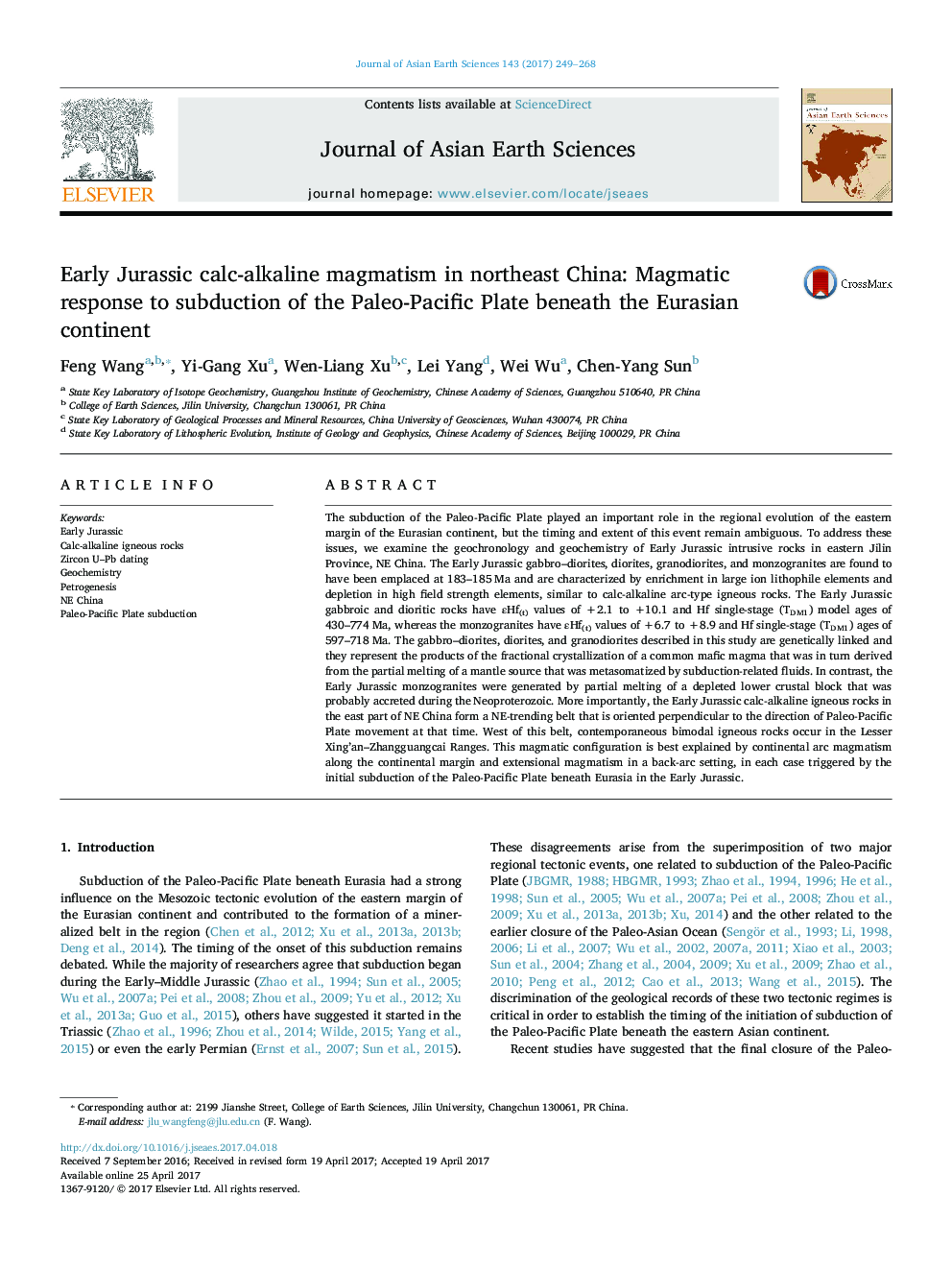| کد مقاله | کد نشریه | سال انتشار | مقاله انگلیسی | نسخه تمام متن |
|---|---|---|---|---|
| 5786011 | 1640329 | 2017 | 20 صفحه PDF | دانلود رایگان |

- A suite of Jurassic calc-alkaline intrusions are recognized in the easternmost segment of CAOB.
- Early Jurassic mafic and dioritic rocks formed via fractional crystallization of a basaltic parental magma.
- Early Jurassic monzogranites were derived from the partial melting of a Neoproterozoic lower crust.
- Early Jurassic igneous rocks formed in response to the initial subduction of the Paleo-Pacific Plate.
The subduction of the Paleo-Pacific Plate played an important role in the regional evolution of the eastern margin of the Eurasian continent, but the timing and extent of this event remain ambiguous. To address these issues, we examine the geochronology and geochemistry of Early Jurassic intrusive rocks in eastern Jilin Province, NE China. The Early Jurassic gabbro-diorites, diorites, granodiorites, and monzogranites are found to have been emplaced at 183-185 Ma and are characterized by enrichment in large ion lithophile elements and depletion in high field strength elements, similar to calc-alkaline arc-type igneous rocks. The Early Jurassic gabbroic and dioritic rocks have εHf(t) values of +2.1 to +10.1 and Hf single-stage (TDM1) model ages of 430-774 Ma, whereas the monzogranites have εHf(t) values of +6.7 to +8.9 and Hf single-stage (TDM1) ages of 597-718 Ma. The gabbro-diorites, diorites, and granodiorites described in this study are genetically linked and they represent the products of the fractional crystallization of a common mafic magma that was in turn derived from the partial melting of a mantle source that was metasomatized by subduction-related fluids. In contrast, the Early Jurassic monzogranites were generated by partial melting of a depleted lower crustal block that was probably accreted during the Neoproterozoic. More importantly, the Early Jurassic calc-alkaline igneous rocks in the east part of NE China form a NE-trending belt that is oriented perpendicular to the direction of Paleo-Pacific Plate movement at that time. West of this belt, contemporaneous bimodal igneous rocks occur in the Lesser Xing'an-Zhangguangcai Ranges. This magmatic configuration is best explained by continental arc magmatism along the continental margin and extensional magmatism in a back-arc setting, in each case triggered by the initial subduction of the Paleo-Pacific Plate beneath Eurasia in the Early Jurassic.
230
Journal: Journal of Asian Earth Sciences - Volume 143, 1 August 2017, Pages 249-268